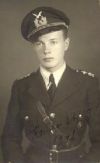 Kauko
Aho
-
Blenheim
Pilot
In
The
Continuation
War
Kauko
Aho
-
Blenheim
Pilot
In
The
Continuation
War
Quick index:
Introduction |
And it didn't speak |
Bombs away |
Navigating from tree to tree |
Pyry dogfights |
A bad landing |
Bombers like cattle |
At that moment I became friends of the Germans |
The pilot training course rebels! |
Low level flying |
Going to Sweden |
The last flight of BL-158 |
Mr Kauko Aho at the virtual pilot meeting |
Credits
Introduction

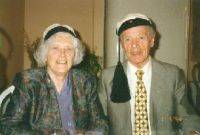 Virtual pilots from Tampere met Kauko Aho, a Blenheim pilot of the Bomber Squadron 42 (PLeLv 42) and Blenheim radio operator/gunner during the Winter War, twice in January and February 2001.
Virtual pilots from Tampere met Kauko Aho, a Blenheim pilot of the Bomber Squadron 42 (PLeLv 42) and Blenheim radio operator/gunner during the Winter War, twice in January and February 2001.
Jukka "Grendel" Kauppinen of the Icebreakers squadron, accompanied by Sakari "Julle" Rantanen and Jari "Jarru" Latomäki of Moosefly squadron, demonstrated the virtual piloting hobby to Mr. Aho, while listening keenly to his recollections. This article is a collection of single incidents from Mr Aho's wartime flying career. Mr Aho has read the article and made corrections he deemed necessary.
Original finnish language article translated by SubLt Markku Herd, Finnish Navy. Many thanks!
And it didn't speak
Mr Aho tells of one Blenheim mission. The weather was overcast with the cloud cover hanging low. The bomber was flying close to clouds, when suddenly a Russian fighter descended from the clouds right ahead. The Blenheim had a single light machine gun in the wing, and the pilot had a sight for the weapon, so...
"There it swam in the middle, really presenting itself as a target. I took good aim and pulled the trigger - and that damn gun didn't speak anything. It was the only time I ever tried to fire it. I never made another try, since it wouldn't have spoken anyway."
Happened in spring/summer 1944.
Bombs away
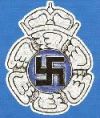 We discussed with Mr Aho, how a man must have courage and strength of will to go into battle again and again. I mentioned one incident where the bombardier of a fresh (apparently Blenheim) crew accidentally dropped their bombs when trying out the bomb sights. "There the bombs fell in the woods, and the boys discussed of what they should do."
We discussed with Mr Aho, how a man must have courage and strength of will to go into battle again and again. I mentioned one incident where the bombardier of a fresh (apparently Blenheim) crew accidentally dropped their bombs when trying out the bomb sights. "There the bombs fell in the woods, and the boys discussed of what they should do."
Mr Aho commented, "there's nothing to do but go home, an empty plane does little good there." But the crew decided that they'd be called cowards if they return - so they had kept in formation with their empty plane, through all the AA fire, and back. Nobody spoke of the case until long after the war they confessed it in a squadron meet. There the squadron commander told them that of course everyone had seen it, but no one had said anything since the boys had bravely gone all the way.
At this point Mr Aho told how he once had had to jettison his bomb load into a lake. The squadron had taken off on a bombing mission, but the weather had turned bad and the formation had scattered. They didn't find their target and had to return home. Over Lake Ladoga Aho had ordered the bombs to be dropped. The bombardier had wondered, "There? Are you certain?" "Yes, down there," and there the bombs splashed. You weren't allowed to land a Blenheim with bomb load. The plane found its way to the home base in Wärtsilä, but the rest of the squadron got spread all around southern Finland - some planes even landed in Malmi!
Navigating from tree to tree
The pilots had their joke of their navigators. They were said to be able to find their way from one tree to another, like the groundpounders in the forest, but on longer flights they got hopelessly lost. On the other hand experienced pilots learned to recognize big landmarks, like Lake Ladoga and other big lakes, and thus find their way home even in bad weather (referring to the above Bombs Away story).
Pyry dogfights
Mr Aho told of his training time in the Air Warfare School at Kauhava. They flew several types of planes, but also practised dogfights in the Pyry trainer. They did 1 vs 1, 1 vs 2, 2 vs 2 and even 4 vs 6 battles.
Information about "Pyry": VL Pyry by Finnish Air Force Aircraft in the World War Two.
A bad landing
At one landing Mr Aho almost ran out of runway. The lead stopper came off the end of the brake wire and the brakes were lost. "Fortunately the field was long, two kilometers." There was enough runway to land even without brakes.
But the crosswind (from the right) was strong. The plane kept turning left and tried to stray out of the runway. Aho had to run the left engine to aim the Blenheim's nose against the wind, then wait again for the plane to slow down with wind turning the plane back to the left. So there they snaked the whole two kilometers curving from side to side. Fortunately the plane eventually slowed down enough not to go out of the field.
In the plane there was a new young bombardier, who never comprehended the situation. He just sat there looking at Mr Aho, "why are you swerving like this," and commented reproachfully, "that was one lousy landing."
Bombers like cattle
I mentioned Mr Väinö Pokela's comment of escorting bombers, "it was like herding cattle, go now, shoo!" Mr Aho replied that they had the same problem within their squadron, because the commander had the best plane. His was a new, long-nosed Blenheim, when the others had the older, short-nosed version, and couldn't keep up with his speed even at full throttle.
At that moment I became friends of the Germans
Mr Aho showed us the notes he had made of his bombing flights during the grand offensive of the Red Army, in summer 1944. He told briefly of each flight, "there we bombed a landing, there was the toughest AA of the war" and so on. One mission had a short note, "FW190". I noticed the note and of course it perked my curiosity. The first comment of that flight was, "This was the first time I saw Focke Wulf 190's."
Mr Aho's squadron was once again flying towards the fiercest battles (the Soviet 1944 summer offensive) when:
"Then I saw two round-nosed fighters coming from behind. They approached terribly fast. They came to our side and I saw the black crosses in the fuselage and swastika in the rudder. And then there were more, they were all around us. I felt really warm, we weren't alone any more. At that moment I became friends of the Germans."
Mr Aho's words "at that moment I became friends with the Germans" especially impressed yours truly. I imagined how his squadron was once again heading towards the toughest spot - and without warning they see German fighters that had come to help.
The German flight group Kuhlmey were on their first mission in Finland, and their target was the same as that of the Blenheims of Kauko Aho's 42th Bomber Squadron. The group's support was one of the decisive factors in the battle.
The pilot training course rebels!
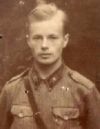 One of Mr Aho's most peculiar memories was from the time of his twin engine training. You see, the course rebelled.
One of Mr Aho's most peculiar memories was from the time of his twin engine training. You see, the course rebelled.
The group had graduated (fall 1943) but there was no word of their transfer to the squadron. No explanation was given. They could fly only occasionally and they weren't given any sensible duties, so naturally the morale was low. Finally the entire course requested transfer to Army.
"If we had done one application together, it would have been an act of rebellion. But when each of us made one separately, it wasn't officially such an act. Another course had made a joint application, and that had been interpreted as rebellion."
The Powes that Be didn't appreciate the way the men took advantage of loopholes. Higher and higher ranking officers came to ask the men to take back their applications. At first the orders were loud, but the higher the rank, the more reasonable the request.
"We didn't agree."
Eventually the CinC of the Air Force, Lundqvist, received the papers, and he wrote to each, "Not accepted. J.L."
The reason for keeping the men back was finally told. The construction of new Blenheim bombers was almost finished, and the pilots of this course was assigned to them. "There were no other pilots in all Finland for those planes except us." Other pilots couldn't be taken from combat squadrons, so the course had to wait until the planes were ready. It was perhaps for security reasons that the men themselves weren't told.
Low level flying
Mr Aho told spoke of a practise the squadron pilots had for a while. When returning from mission they tried to fly as low as possible over Lake Ladoga - trying to make ripples on the surface.
Later a higher-ranking officer strictly forbade this. And it was only short time later that a Russian fighter attacked his own bomber, either wounding or killing (the writer cannot remember) the rear gunner. The attack came from rear below, so flying low would have helped...
Mr Aho realizes that flying low didn't always help and had its own dangers, but at least the risk was lower. It was hard for the enemy fighters to spot them, and harder still to attack.
Going to Sweden
A Junkers 88 crew of another squadron was coming home from a mission using the homing device. A property of the device was that it didn't show the distance to the radio beacon - or when the plane passed over it. The home base of the bomber was perhaps Malmi (memory fails the writer again). During the long flight the crew leisurely played card, until someone happened to look out. There was the Turku archipelago and Åland.
"Goddammit we're going to Sweden." And so they turned back.
The last flight of BL-158
"On August 1st, 27 bombers of the regiment attacked the bridges west of Lake Vuontelejärvi and scored direct hits. Major Kepsu's group of 14 bombers from the 42th Bomber Squadron got surprised on their way back by two La-5 fighters, who shot down two Blenheims. An escorting MT fighter shot down one La-5."
The end of many lives can be told so briefly. Kauko Aho's BL-158 met its fate in this attack. Mr Aho is the sole survivor.
"It was trought to be so troubled situation that we couldn't fly a longer, safer route to avoid Russian front lines as usual, but we had to head straight to target." Normally the bomber squadrons took the safest possible route, to avoid enemy radar and to minimize exposition in hostile territory. This attack however was thought too important and urgent. But no one higher in the chain of command had observed that the flight path followed the front line - and there were several airbases nearby on the enemy side.
After the bombing the gunner of Aho's plane, PFC Emil Kemppinen, called out of an attacking enemy fighter. Right after that the plane rattled: "He fired a single long burst, that sounded like he had no control over it. A whole clip at once." The fighter hit the bomber's stabilizers and evidently killed the gunner. The tail stabilizers of the Blenheim got stuck and the plane was out of control, until Mr Aho noticed that he can handle the plane by trimming the stabilizer. Aho kept the plane in the air, even if the flight was wobbly.
The details of the attack are somewhat unclear. According to official report, a La-5 made five attack runs on the Blenheim. Mr Aho tells he later recognized the attacker as a P-39 Airacobra. In our discussion we concluded that the P-39 hit the plane with machine guns only, since there was only a "rattle" but no bigger explosions or jolts from cannon rounds. Mr Aho saw the P-39 pull up in front of the bomber after the attack. We haven't clarified with Mr Aho yet if there was only a single attack by one P-39 or did the BL-158 get attacked by La-5's too.
In any case the following events make a sad story. As Mr Aho struggled with the controls he ordered the bombardier, Lt Lauri Rouhiainen, to see from the hatch in the back of the cockpit if he could see PFC Kemppinen in the hull. You could see the gunner's position through the Blenheim's hull. Lt Rouhiainen didn't see the gunner, so Mr Aho told him to bail out. According to Mr Aho, he would have done an emergency landing, if it could have been confirmed that the gunner was alive. After what had happened, because the intercom was silent and the man couldn't be seen, Aho and Rouhiainen had to conclude that Kemppinen was dead.
Aho managed to level the plane and prepared to jump too. The bombardier however stood in the hatch in panic and didn't dare to jump. Despite Aho's urging and slaps in the back, the bombardier couldn't muster up the courage to jump. Eventually the plane came so low that Aho returned to controls and tried to get more altitude. He succeeded.
"I then returned to the hatch and couldn't see the bombardier anywhere, I guessed he had jumped. So I followed and pulled my chute open. It opened and I looked after the plane. There was a parachute tangled in the tail fin. And the man hanging from the chute."
Looks like Lt Rouhiainen had unfortunately opened his chute too early and got tangled in the stabilizer. So Mr Aho was the only living crewmember of the BL-158. Mr Aho had no sympathy to the people who planned the raid, he had several harsh comments of incompetent planning and rushing.
The history of BL-158:
"BL-158, the 13th plane of Series II.
25.11.41 test flight
28.11.41 damaged by taxing BL-147 at Tampere
13.12.41 assigned to 1/LeLv 42.
1.3.43 transferred to 3/LeLv 42.
9.9.43 sent to factory for maintenancev
28.2.44 assigned to 2/PLeLve 42
1.8.44 shot down by a fighter at Tohmajärvi.
Total flight time 353 h 35 min.
26.9.44 removed from roster."
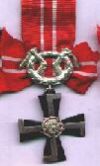
"Cross of Freedom with Swords 4th class" (Vapaudenristi miekoilla), 25.8.1944.
|

"Cross of Freedom with Swords and Oak Leaves" (Vapaudenristi miekoilla ja tammenlehvillä), 29.12.1944.
|
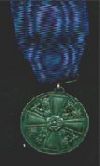
Medal of White Rose, 1st class (Valkoisen ruusun mitali, ensimmäinen luokka), 6.12.1984.
|
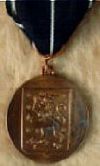
Memorial medal of Continuation War 1941-1944 (Jatkosodan muistomitali).
|
Mr Kauko Aho at the virtual pilot meeting
Mr Kauko Aho visited the Urban Blitz 2001 virtual pilot meeting on Feb 2nd-4th 2001 with two fellow pilots, Olli Sarantola and Lauri Väisänen. Read the record: Blitz '01 - Meeting with the veterans (English version).
I heartily thank Mr Kauko Aho of giving us the honor of meeting him, discussing aviation history and listening to memories from beyond years.



Credits
This article is the summary of some discussions we have had with mr. Kauko Aho. Article is based on notes and recollections. Mr Aho has read the article and made corrections he deemed necessary. Mr. Aho was met twice in Tampere Finland during January and February 2001, in a convention and another meeting arranged by Virtuaalilentäjät r.y. / Finnish Virtual Pilots Association. © VLeLv Icebreakers 2000/2001, Virtuaalilentäjät r.y. / Finnish Virtual Pilots Association.
Photographs: Kauko Aho, Ken Arnold, Olli Korhonen and Suomen Ilmavoimat talvi-, jatko- ja Lapin sodassa.
Written by Jukka "Grendel" Kauppinen, VirtuaaliLentoLaivue Icebreakers.
English translation by SubLt Markku Herd, Finnish Navy.
| 


 Virtual pilots from Tampere met Kauko Aho, a Blenheim pilot of the Bomber Squadron 42 (PLeLv 42) and Blenheim radio operator/gunner during the Winter War, twice in January and February 2001.
Virtual pilots from Tampere met Kauko Aho, a Blenheim pilot of the Bomber Squadron 42 (PLeLv 42) and Blenheim radio operator/gunner during the Winter War, twice in January and February 2001.
 We discussed with Mr Aho, how a man must have courage and strength of will to go into battle again and again. I mentioned one incident where the bombardier of a fresh (apparently Blenheim) crew accidentally dropped their bombs when trying out the bomb sights. "There the bombs fell in the woods, and the boys discussed of what they should do."
We discussed with Mr Aho, how a man must have courage and strength of will to go into battle again and again. I mentioned one incident where the bombardier of a fresh (apparently Blenheim) crew accidentally dropped their bombs when trying out the bomb sights. "There the bombs fell in the woods, and the boys discussed of what they should do."
 One of Mr Aho's most peculiar memories was from the time of his twin engine training. You see, the course rebelled.
One of Mr Aho's most peculiar memories was from the time of his twin engine training. You see, the course rebelled.






